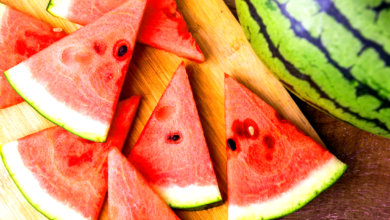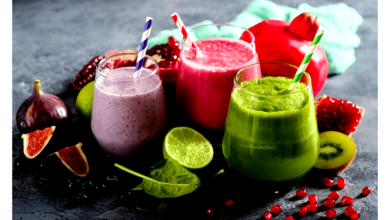How to Meal Prep for a Whole30 Diet A Beginner’s Guide
Whole30 diet meal prep made easy Learn beginner tips for planning prepping & storing compliant meals to succeed on your 30-day reset.

The Whole30 diet is a transformative 30-day nutrition reset designed to eliminate inflammatory foods, improve digestion, and help you identify food sensitivities. By cutting out sugar, grains, dairy, legumes, and processed foods, the program encourages whole, nutrient-dense eating. However, sticking to these guidelines can feel overwhelming without proper preparation which is why meal prepping is the key to success. Planning and preparing your meals in advance ensures you always have compliant options on hand, reducing temptation and making the journey smoother.
Whether you’re new to Whole30 or looking for a more structured approach, this guide will walk you through essential meal prep strategies. From smart grocery shopping to batch cooking and storage tips, you’ll learn how to streamline your kitchen routine while staying committed to the program. With the right preparation, you’ll not only complete the 30-day challenge but also build lasting, healthy eating habits that extend far beyond the month.
How to Meal Prep for a Whole30 Diet
Elimination of Inflammatory Foods
The Whole30 diet requires removing common food groups known to cause inflammation, digestive issues, or hormonal imbalances. This includes sugar (real and artificial), grains (even gluten-free varieties), dairy, legumes (beans, lentils, peanuts), alcohol, and processed additives (like MSG or carrageenan). By cutting these out for 30 days, the program helps “reset” your body, allowing you to identify potential food sensitivities while reducing bloating, fatigue, and cravings.
Focus on Whole, Nutrient-Dense Foods
Instead of processed options, the diet emphasizes whole, unprocessed ingredients Proteins: Grass-fed meat, wild-caught fish, pasture-raised eggs. Vegetables Prioritizing leafy greens, cruciferous veggies, and colorful produce. Healthy Fats Avocados, coconut oil, olives, nuts, and seeds. Fruits In Meal Prep, focusing on lower-sugar options like berries. This approach ensures you’re nourishing your body with vitamins, minerals, and antioxidants while stabilizing blood sugar and energy levels.
Plan Your Meals in Advance
Create a Weekly Meal Blueprint
Map Out Every Meal Designate specific proteins, vegetables, and fats for each breakfast, lunch, and dinner. Example Breakfast Veggie omelet with avocado. Lunch Grilled chicken over mixed greens with olive oil dressing. Dinner Slow-cooked pot roast with roasted carrots and cauliflower. Minimize Snacking Build satiating meals with Protein (1–2 palm-sized portions). Vegetables (2+ cups per meal). Meal Prep (1–2 thumb-sized portions like avocado or ghee). Theme Nights Simplify planning (e.g., “Sheet-Pan Mondays,” “Slow Cooker Wednesdays”).
Batch-Cook Core Components
Proteins Cook large batches of versatile basics Shredded chicken, ground turkey, hard-boiled eggs. Roast a whole salmon or tray of meatballs. Vegetables Prep sheet-pan roasted veggies (sweet potatoes, broccoli) or spiralized zucchini for quick stir-fries. Sauces/Dressings Whip up 1–2 compliant sauces (e.g., avocado crema, lemon-tahini dressing) to prevent flavor fatigue. Grocery List Organize by category (produce, meat, pantry) to streamline shopping and avoid non-compliant impulse buys.
Stock Up on Whole30-Compliant Ingredients
Proteins
Grass-fed beef (ground beef, steaks, roasts). Free-range poultry (chicken breasts, thighs, turkey). Wild-caught fish (salmon, cod, tuna – fresh or canned in water). Pasture-raised Meal Prep (great for quick meals). Other options: Lamb, bison, pork (check for no sugar in seasoning).
Vegetables
Leafy greens Spinach, kale, arugula, romaine. Cruciferous veggies Broccoli, cauliflower, Brussels sprouts, cabbage. Root vegetables Sweet potatoes, carrots, beets (in moderation). Other staples Zucchini, bell peppers, mushrooms, asparagus. Convenience picks: Pre-washed greens, spiralized veggies.
Healthy Fats
Cooking fats Extra virgin olive oil, coconut oil, avocado oil, ghee. Meal Prep Avocados, olives, coconut milk (full-fat, no additives). Nuts & seeds Almonds, walnuts, cashews (no peanuts!), chia seeds, flaxseeds. Note: Avoid vegetable oils (soybean, canola, corn).
Fruits
Best choices Berries (blueberries, strawberries), apples, pears. Occasional treats Bananas, grapes, mango (higher in sugar). Avoid Dried fruits (except unsweetened), fruit juices.
Pantry Staples
Canned goods Tomato paste, coconut milk, olives. Herbs & spices Garlic, ginger, cumin, turmeric (check for no additives). Condiments: Mustard (no sugar), hot Meal Prep (compliant brands like Frank’s Red Hot).
What to Avoid
Hidden additives Carrageenan, MSG, sulfites. Store-bought traps: Pre-made sauces, dressings, broths (often contain sugar). Solution: Make your own mayo, dressings, and marinades.
Efficient Cooking Strategies
To maximize your meal prep time, use cooking methods that allow for large batches Sheet Pan Meals: Toss proteins and veggies with oil and spices, then roast them together. Slow Cooker/Instant Pot: Perfect for stews, soups, and shredded meats. Pre-Chopped Vegetables: Save time by washing and chopping veggies in advance. Cook proteins in bulk and portion them into containers with different seasoning variations to keep meals interesting. Hard-boiled eggs pre-made salads, and snackable veggies with guacamole can serve as Meal Prep compliant options when you’re in a rush.
Proper Storage for Freshness
Invest in quality storage containers to keep meals fresh. Glass containers are ideal for reheating, while BPA-free plastic works for shorter storage. Divide meals into single-serving portions for easy grab-and-go options. Refrigerator: Store prepped meals for up to 4 days. Freezer: Soups, stews, and cooked meats can last up to 3 months. Label containers with dates to track freshness and avoid waste.
Stay Motivated and Flexible
Anticipate Challenges & Build Support Systems
First-Week Cravings Expect sugar/carb withdrawal (headaches, fatigue). Combat this by Keeping emergency snacks like Rx Bars or Meal Prep dates. Drinking herbal tea or sparkling water to curb cravings. Preparing “treat” foods like coconut-chia pudding for sweet cravings. Meal Fatigue Prevention Rotate 3–4 weekly “anchor recipes” (e.g., a favorite curry or burger bowl), but dedicate one meal weekly to testing new recipes (like plantain nachos or cashew-crusted chicken). Accountability Tools Join a Whole30 Facebook group, use the “Tiger Blood” energy tracker, or partner with a friend.
Embrace Imperfection & Troubleshoot Setbacks
Non-Compliant Slip-Ups If you accidentally consume off-plan ingredients Don’t restart unless required (e.g., gluten/dairy exposure). Journal symptoms to identify triggers during reintroduction. Meal Prep Shortcuts For low-motivation days, rely on Pre-cut veggies from the grocery store. Canned wild salmon or tuna for instant protein. Frozen cauliflower rice (check for no additives).
Read More: Why Everyone is Talking About Adaptogens and Their Health Benefits
Conclusion
The Whole30 diet challenges you to rethink your relationship with food, and proper meal prep is your greatest tool for success. By dedicating just a few hours each week to planning, cooking, and storing compliant meals, you eliminate guesswork and temptation. Remember, the effort you put into preparation directly translates to easier, stress-free days filled with nourishing foods that support your health goals. Whether you’re roasting vegetables, batch-cooking proteins, or whipping up homemade sauces, each step brings you closer to completing the program feeling energized and accomplished.
As you finish your 30-day reset, take pride in the discipline you’ve built and the positive changes you’ve experienced. The meal prep skills you’ve developed during your Whole30 diet aren’t just for this challenge they’re lifelong habits that can support cleaner eating and better nutrition long after the program ends. Stay consistent, stay prepared, and most importantly, celebrate your progress as you move toward a healthier, more mindful way of eating.
FAQs
Can I eat snacks on Whole30?
While Whole30 discourages snacking, compliant options like nuts, hard-boiled eggs, or veggies with guacamole are allowed if truly hungry.
Are potatoes allowed on Whole30?
Yes, white and sweet potatoes are permitted, but they should be consumed in moderation.
Can I drink coffee on Whole30?
Yes, but avoid adding sugar, dairy, or non-compliant creamers. Use coconut milk or black coffee instead.
What if I accidentally eat something non-compliant?
The program recommends restarting if a slip-up happens, but assess your own goals and decide what’s best for you.
How do I reintroduce foods after Whole30?
Reintroduce eliminated foods one at a time (e.g., dairy, grains) and monitor how your body reacts over several days.











